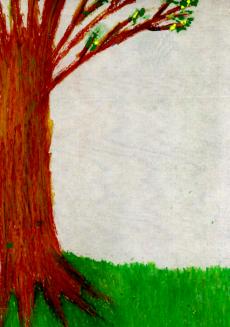Going, Going… Green

Going, Going… Green
“Go Green.” It’s plastered across shirts, billboards and television. Yet, has there been any in-depth education to why you should all of a sudden change your daily habits?
Sally Fenska, a science teacher at Miami, Okla., High School, shared her views about the new green trend. She also teaches an environmental science course.
“The green movement is trendy and there’s a benefit to that, but I worry about it being a cane toad thing,” Fenska said.
Fenska’s reference to the “cane toad thing” originates from Australia. In 1935, a box of cane toads were shipped from Hawaii to Australia to help control a beetle problem. However, the plan backfired and the toad population is now nearly out of control. The cane toad was supposed to help an on-going problem but really created a bigger one.
Fenska continued to talk about on-going problems as well as those that once existed.
“It’s sad rivers have to burn for three days before we know there’s a problem,” Fenska said. “I mean I was alive when this happened.”
In 1969 the Cuyahoga River in Cleveland burned for three days due to oil pollution. The push to go green has existed since then and has since there have been steps to go green.
Ohio History Central, an online encyclopedia of Ohio history, said: “The fire also brought attention to other environmental problems across the country, helped spur the Environmental Movement, and helped lead to the passage of the Clean Water Act in 1972.”
In 1990 Congress passed the Clean Air Act to help lower sulfur dioxide emissions, which generally come from fuel used in cars. In 1992, President Bill Clinton hosted Earth Summit with four main issues involving global warming, pollution, deforestation, and the loss of biodiversity. Although the environmental issues have existed, the green trend is something really marketable in present day.
“Going green is more than a thought process,” Fenska said. “It’s just a matter of education and practical steps. I try to use rechargeable batteries, sort my trash and recycle classroom paper whenever I can.”
Incentives other than education may prove to not only be trendy but almost necessary, at least when the pocket book is involved.
“I think we are a curb-side throw-away society. If we had some incentive, fine or tax break or were forced to- I bet people would recycle more,” Fenska said.
Jamie Stephens, an English teacher at Miami Okla., High School also shared a few ideas about the green trend.
“I think for the most part we need to be doing something, but we’re hypocritical. I drink out of plastic bottles and I’m all about going green,” Stephens said.
There may be people or advertisements telling you to “go green” and you may toss your plastic pop bottles in the bin with three green arrows but the green trend is more than that. Basically, education about the topic seems to be the forefront and basis behind the catch phrase. Hopefully the trend will catch on for the right reason and hopefully something will be done.
“I think it is imperative we do something,” Stephens said. “Global warming is a man-made conscience effort.”
Your donation will support the student journalists of Missouri Southern State University. Your contribution will allow us to purchase equipment and cover our annual website hosting costs.



























